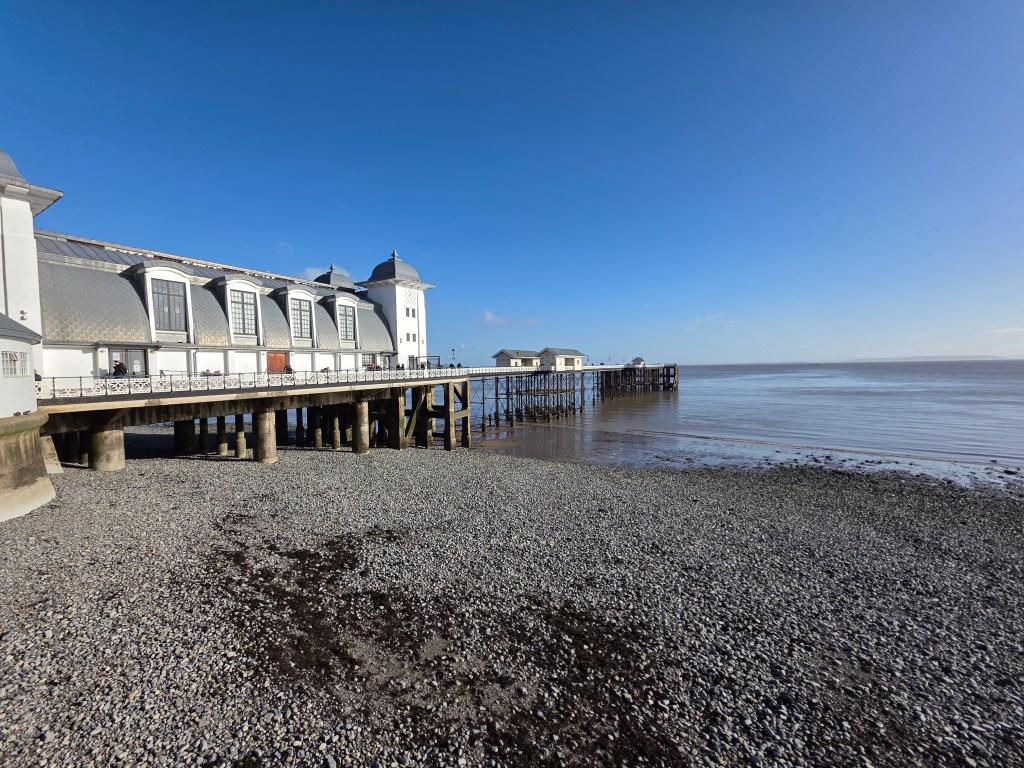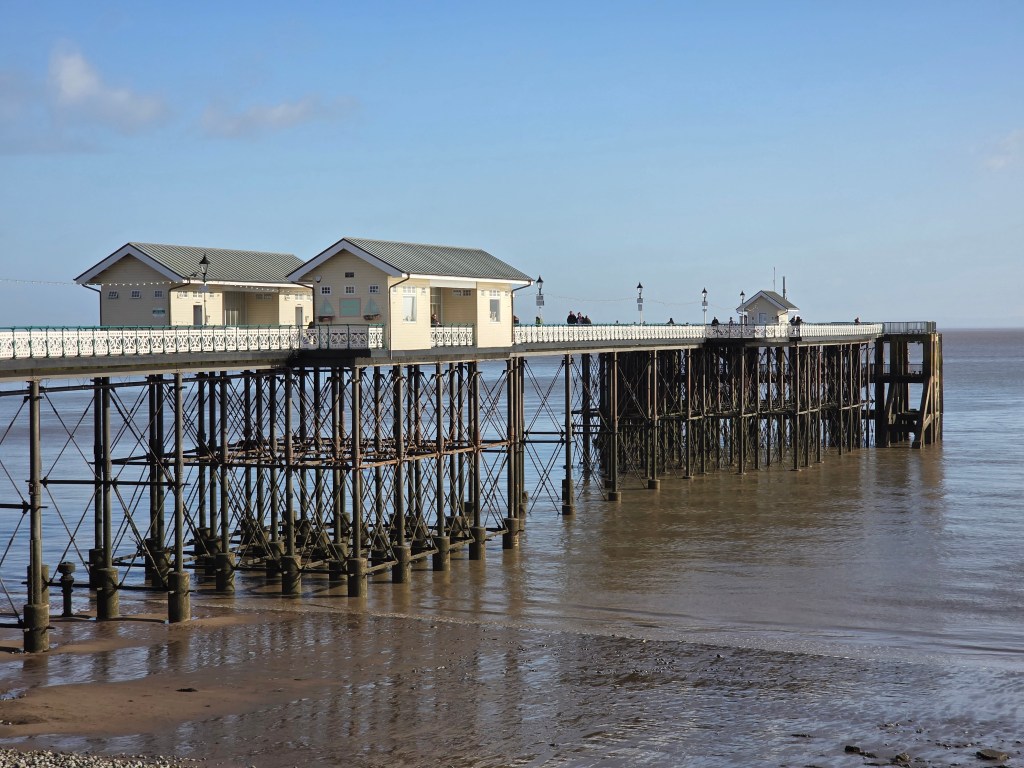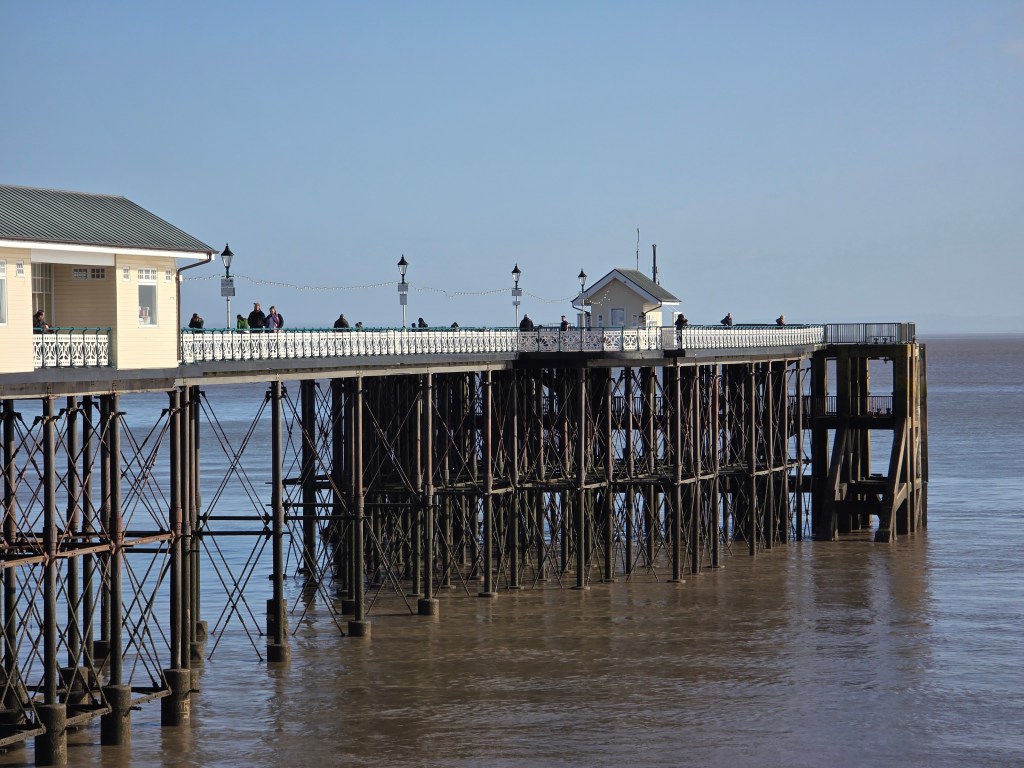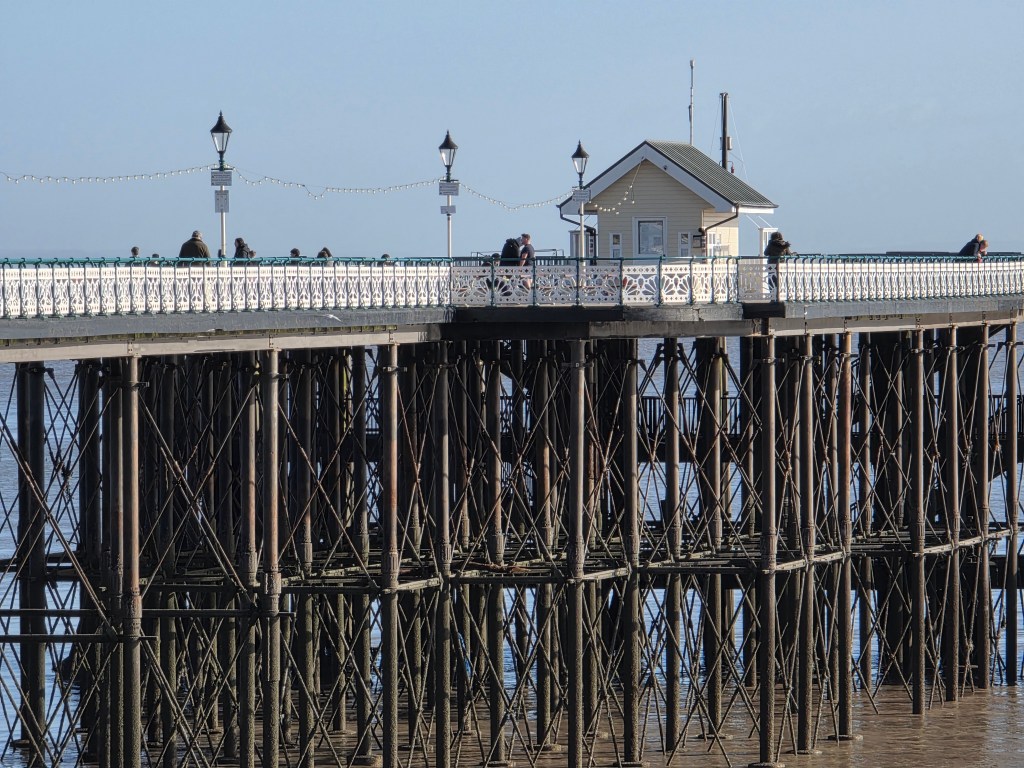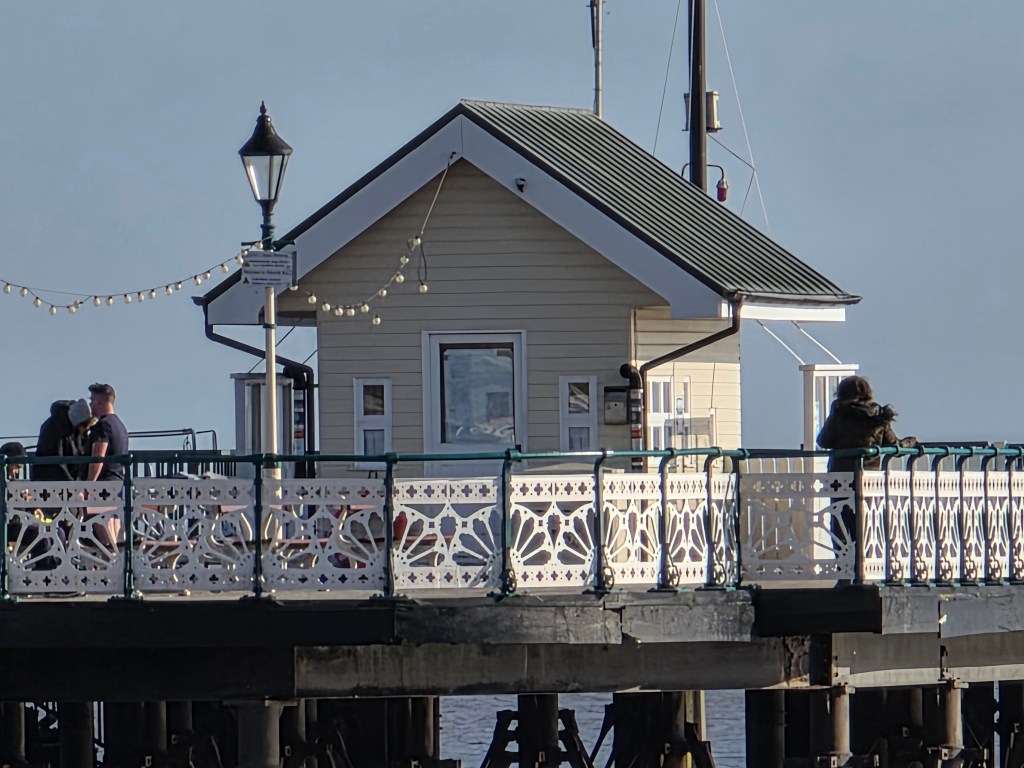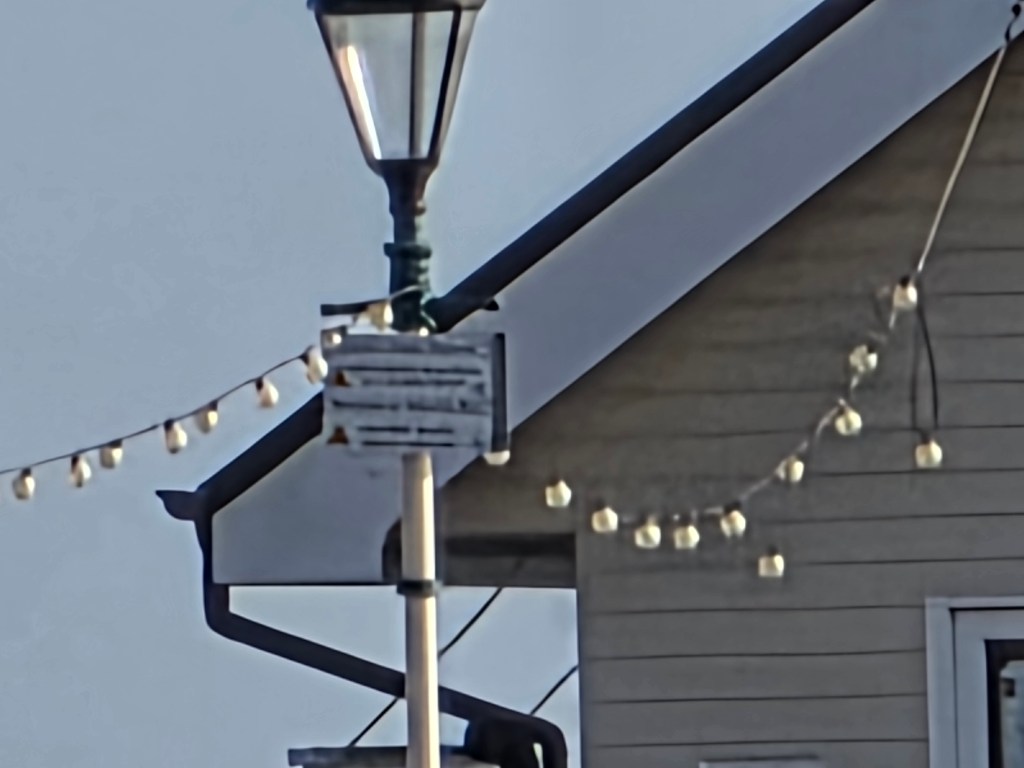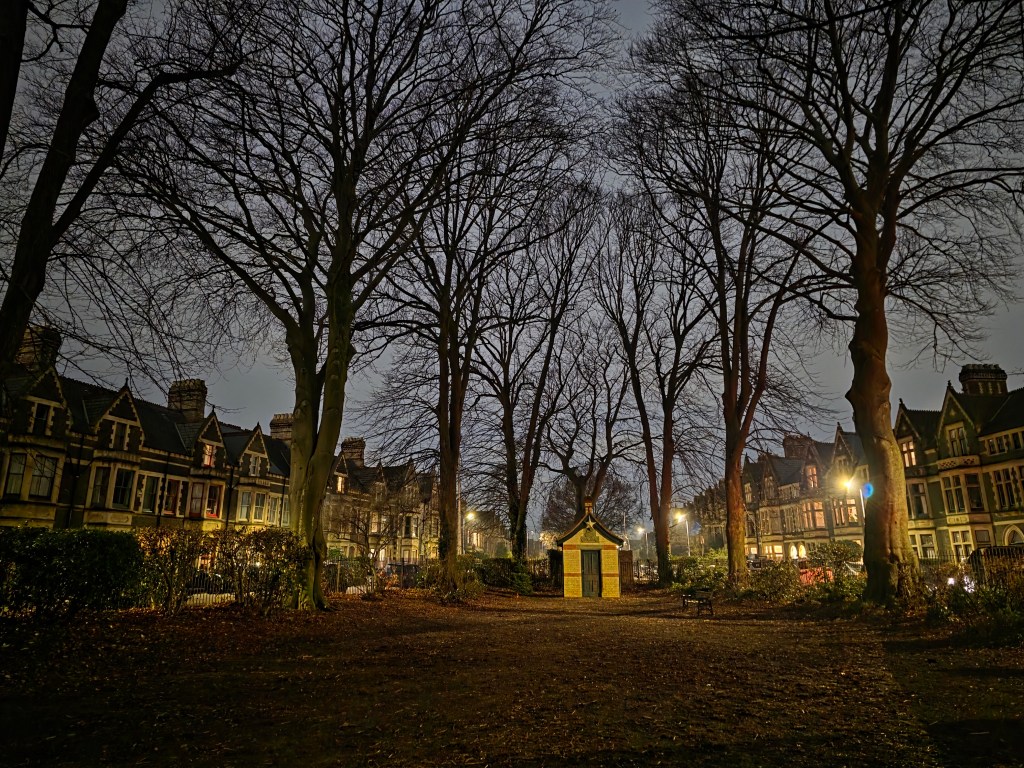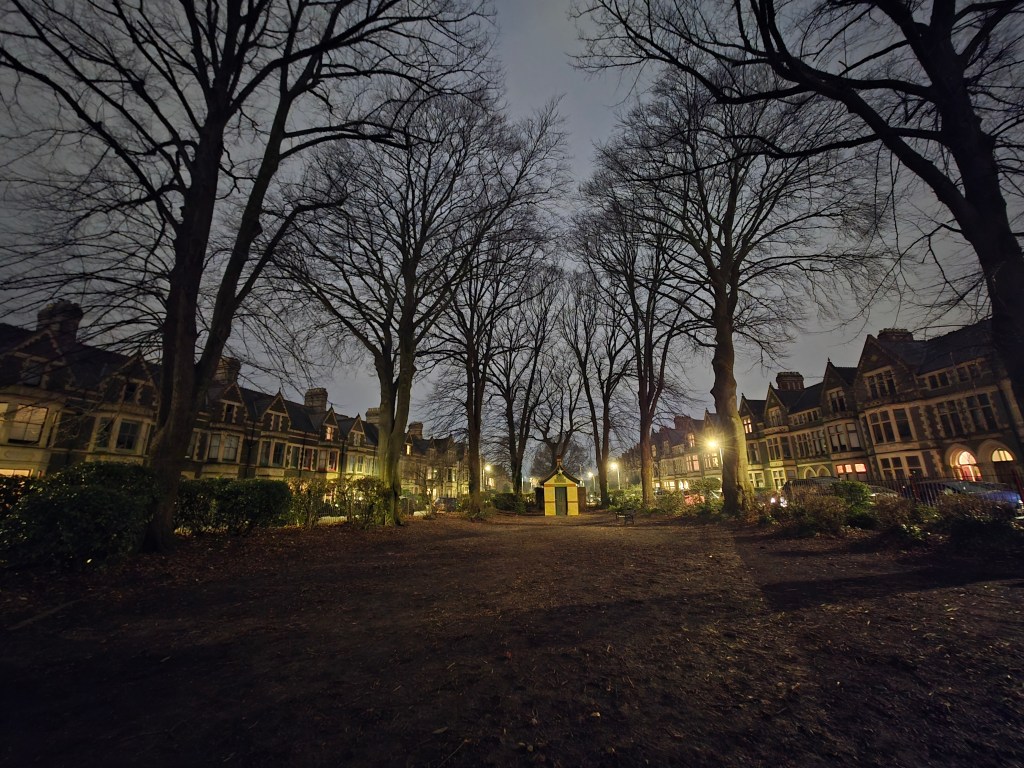Amateur Photographer verdict
The Samsung Galaxy S25 Ultra remains an excellent flagship smartphone for photographers, but there’s little to compel S24 Ultra owners to upgrade already.- 3x high resolution sensors
- 4x lenses
- Advanced AI functionality
- Excellent screen
- Fairly minor camera upgrade from last model
- Very high price
- Screen only available in one size
- Macro mode still not the best
The newest iteration of Samsung’s flagship smartphone builds on the success of previous generations. The Samsung Galaxy S25 Ultra brings the AI photography features of the S24 Ultra, with a modest redesign of the outer body, as well as a slight improvement to one of the four cameras. But, how well does it perform – and can it claim a top spot on our best smartphones for photographers list? It’s time to find out in our expert review.
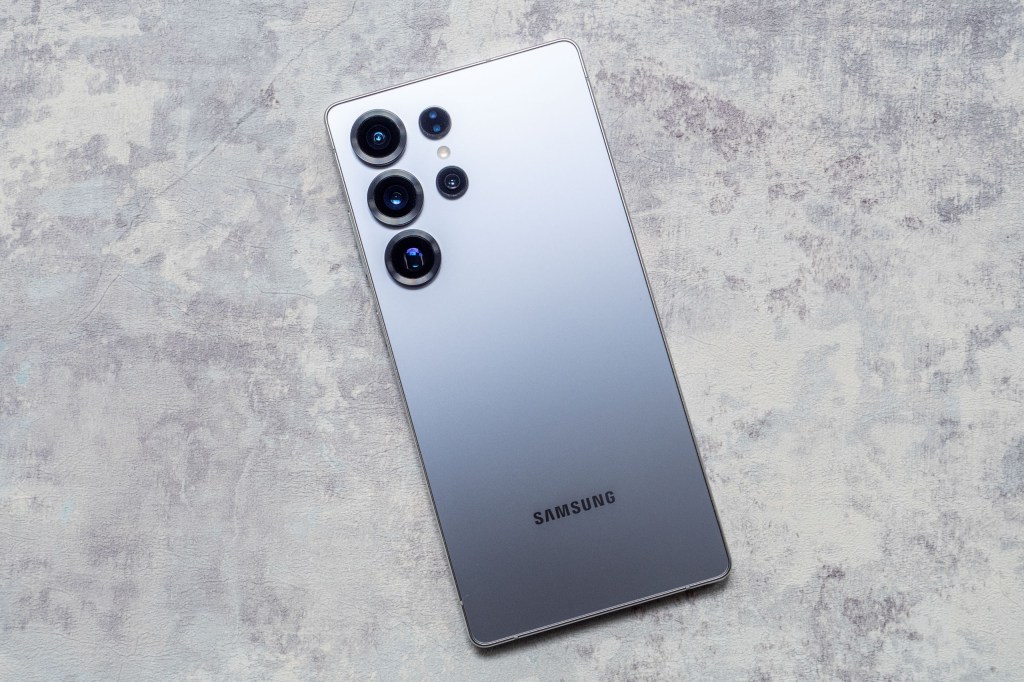
Samsung Galaxy S25 Ultra: At a glance
- 200MP wide camera, 24mm, f/1.7, 1/1.3” sensor, PDAF, OIS
- 50MP ultrawide camera, 13mm, f/1.9, PDAF
- 10MP telephoto camera, 67mm, f/2.4, 1/3.52” sensor, PDAF, OIS, 3x optical zoom
- 50MP periscope telephoto camera, 111mm, f/3.4, 1/2.52” sensor, PDAF, OIS, 5x optical zoom
- 12MP f/2.2, 26mm selfie camera with AF
- 6.9-inch 3120×1440 pixel AMOLED, 2600 nits peak brightness, Corning Gorilla Armor 2
- 8K 24/30fps, 4K 30/60/120fps
- Processor: Qualcomm Snapdragon 8 Elite
- 162.8 x 77.6 x 8.2mm / 218g
How I test the Samsung Galaxy S25 Ultra
I review smartphones from the perspective of choosing one for its photography and camera performance. I look at what the Samsung Galaxy S25 Ultra offers; the features included for photography and video, paying particular attention to the cameras on the phone, and new features, photo editing capabilities, as well as the output from each lens, and how the phone performs overall.
Samsung Galaxy S25 Ultra: Features
Like the Samsung S24 Ultra before, the S25 Ultra features four lenses, which is the most you’ll currently find on any smartphone, and is more than you’ll see on other flagships from the likes of Apple and Google.
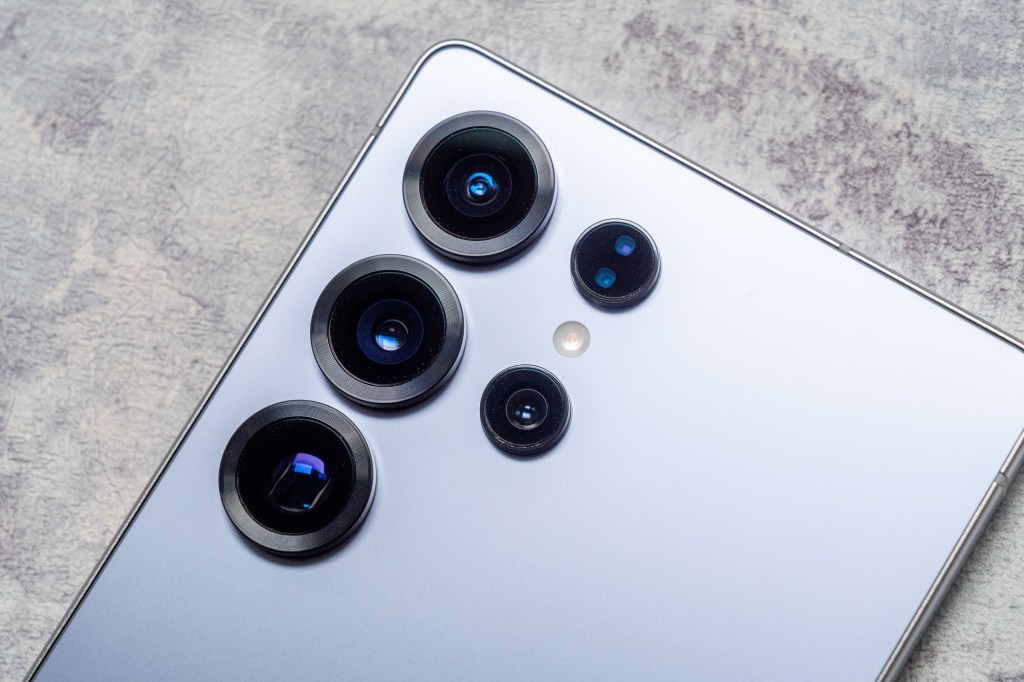
As well as a standard 1x lens, you also get an ultrawide, and two telephoto lenses, offering 3x and 5x zoom. An upgrade from the S24 Ultra is that the ultrawide now features a 50MP sensor, rather than the 12MP sensor as seen before. Whether this has any major impact on image quality, we’ll find out later in the review – images are by default output at 12MP from three of the lenses, and 10MP from the 3x lens, which has a 10MP sensor.
The 5x lens also has a 50MP sensor. Previous generations of the SXX Ultra series had a lower resolution, but more powerful 10x zoom. With the S24 Ultra last year, Samsung claimed that AI technology meant that the 5x lens and 50MP combination could provide just as good results as a 10x lens. There’s also digital zooming up to 100x available, but we’ve generally found in the past to be more of a marketing gimmick than anything else.
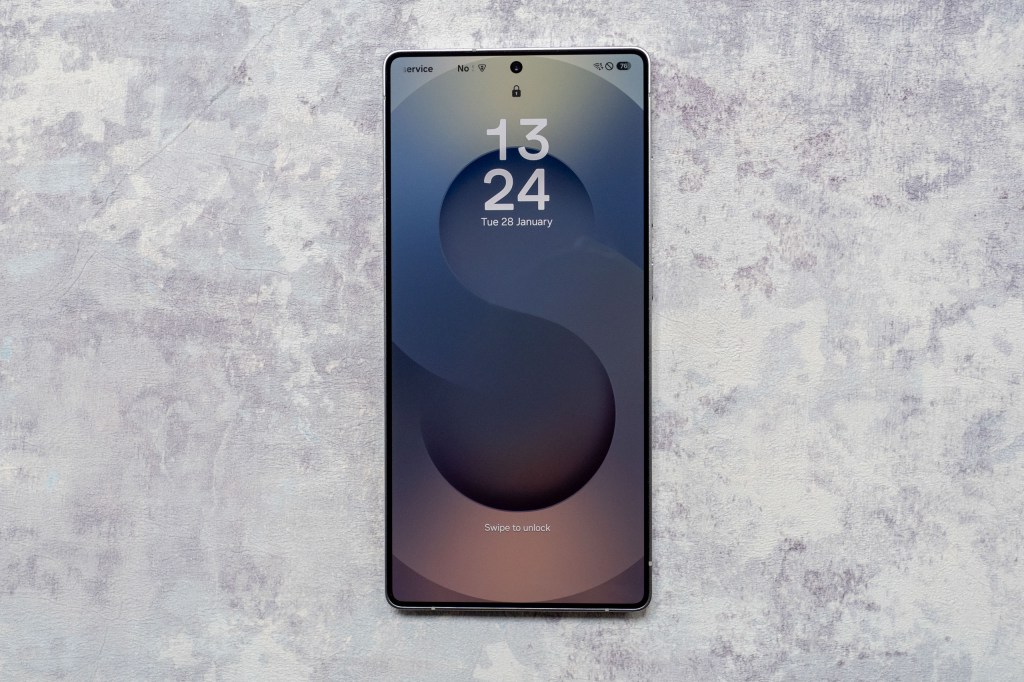
One noticeable change has been made to the S Pen, a stylus which is found hidden in the S25 Ultra’s base. It’s no longer got Bluetooth which means you can no longer use it to trigger the camera’s shutter release. OK, this by itself is not exactly a dealbreaker, but it was a quirky and useful feature for group shots and even some other subjects, such as low light, so it’s a shame for this to have been removed.
The S25 Ultra builds on the AI introduced with the S24 Ultra, with a range of additional features for searching and so on, including inside the photo gallery. There’s also been some improvements to video recording, with the ability to use AI to improve the audio quality.
Although there are few hardware upgrades, some other notable software updates include a new “Virtual Aperture” setting which can be used in the Expert RAW mode, and more additions to the AI editing tools as found in the S24 Ultra. Videographers will also be keen to note the new pro-grade “Log” tools for exposure control and colour grading in the Pro Video mode.
In September 2025, the Samsung Galaxy S25 Ultra received its first OS update to One UI 8, with Android 16 now available. It includes new AI features, such as advanced multimodal AI, and Specific AI-powered tools like Portrait Studio.
Samsung Galaxy S25 Ultra: Handling and Design
Samsung has made some minor adjustments to the look and design of the S25 Ultra, but it’s not a million miles away from the S24 Ultra.
Essentially, it’s got slightly more rounded off corners on the back, while having flatter sides, for a chunkier overall look. The lenses also now have large black circles around them, rather than thinner silver bezels. Whether you like this change or not is likely to be matter of personal preference.
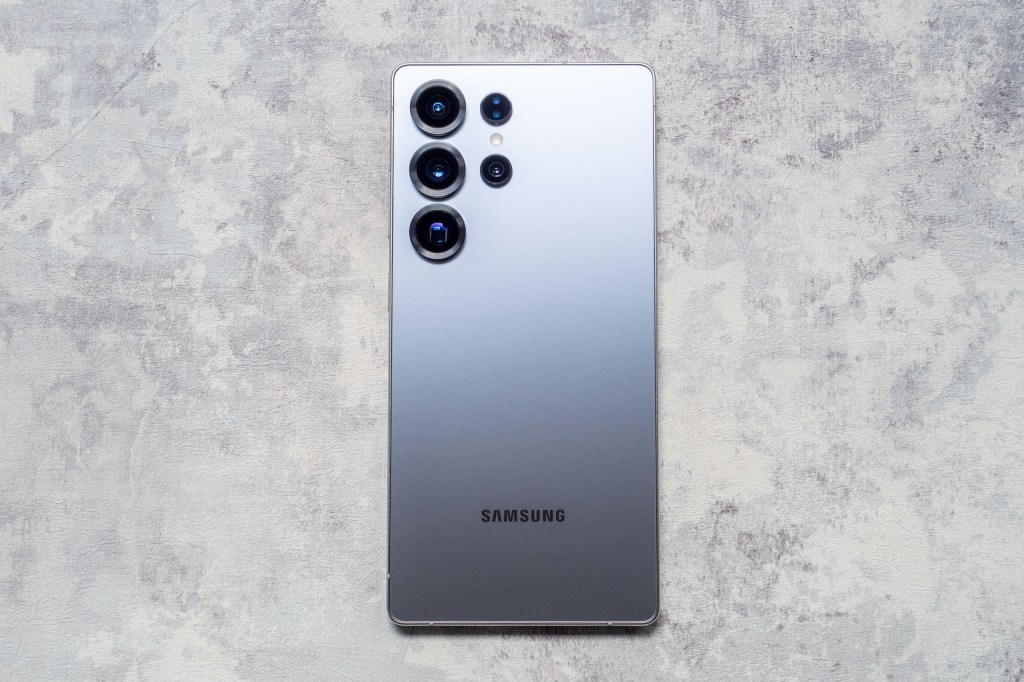
What hasn’t changed is the overall size of the device, which is still rather on the massive side. With a 6.9-inch screen, it’s quite cumbersome, and personally I prefer a much smaller phone. I’d like to see Samsung going the way of Apple iPhone 16 Pro/Max and Google Pixel 9 Pro/XL and introduce two size variants in its flagship models – while you can get smaller Samsungs, you lose out on all the camera goodies that come with the S25 Ultra. One bit of good news however is the “thinnest bezel ever” seen in an S series, so although that screen is undoubtedly massive, you are at least getting the full advantage of the whole screen – and I can’t deny videos and pictures look great on it.
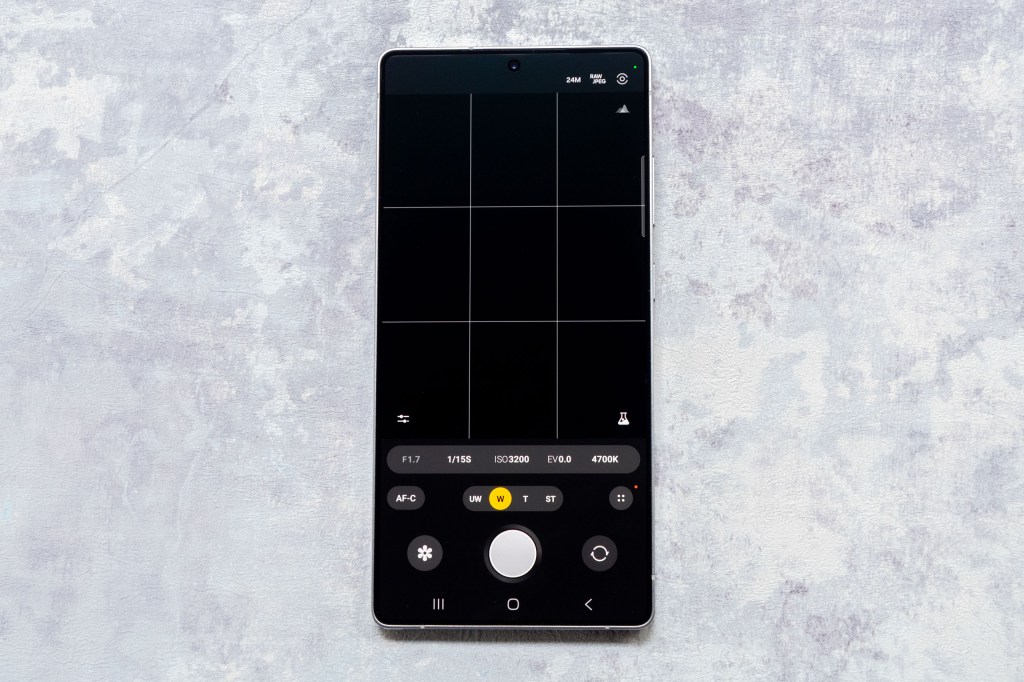
Another great thing about the S25 Ultra’s screen is its anti-reflective coating, which does a fantastic job of reducing glare and reflections – you can really see this in action when you place it next to another phone which doesn’t have the same benefit. Its maximum brightness is 2600 nits, which is pretty good – but there are some much brighter options out there, such as the 5000-nit Honor Magic 7 Pro.
All of the S25 Ultra’s lenses are found in a line on the left hand side of the back of the phone. It looks neat, but it does mean that if the phone is placed on a surface such as a table, it wobbles and doesn’t sit flat. You can mitigate for this somewhat by using a case that evens out the surface a bit, though. We generally recommend cases, even though the S25 Ultra benefits from Corning Gorilla Armor 2 for enhanced protection.
Samsung Galaxy S25 Ultra: Native Camera App
Samsung phones have a pretty comprehensive native camera app, and the S25 Ultra is no different. To access it from the locked/off screen, you can quickly double press the phone’s power button, which is useful for reacting to unfolding events in front of you.
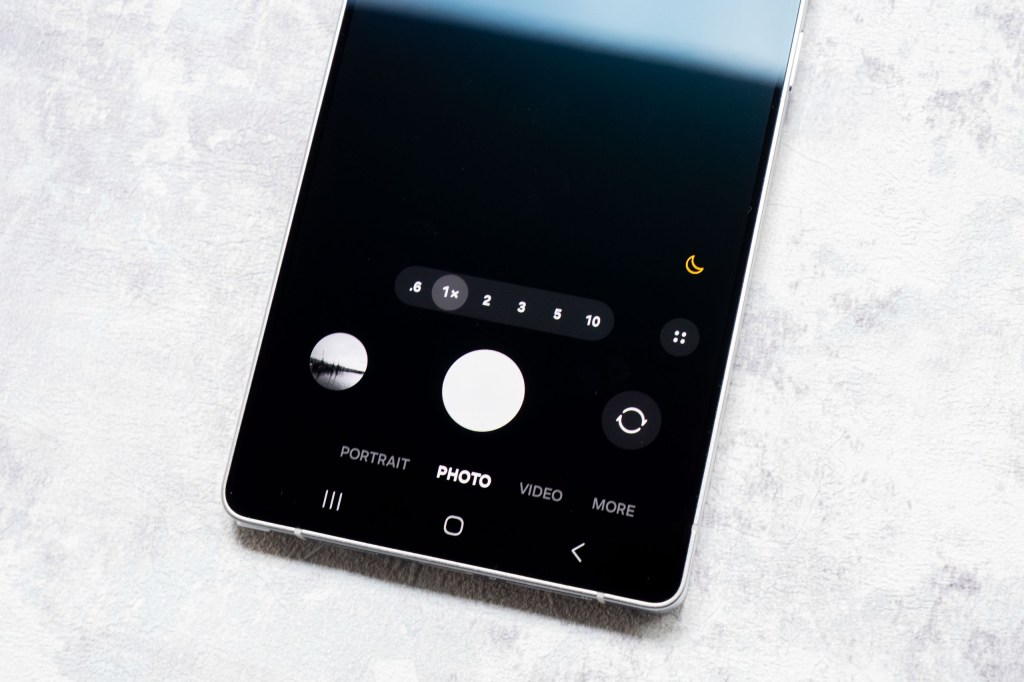
By default, you’ll find yourself shooting in the “Photo” mode, which gives you access to all of the lenses, as well as digital or cropped options in between – so for example you can tap straight to 2x, 10x and even 20, 30 and 100x. It’s great to be able to quickly jump to the different options – and although you can also pinch to zoom in, it’s a much quicker process when you want to go beyond 10x if you can just jump straight to 100x.
In the native photo mode, you should find that Night mode automatically kicks in during low light, while macro is also automatically activated if you get close to a subject. There is a separate manually selectable night mode, but sadly no separate macro mode. The S25 Ultra still uses the traditional (for phones) method of switching to the ultrawide camera if you bring it close to a subject. Over the last few years, phones which switch to the telephoto camera tend to produce much better results, so it’s a shame not to have it here – it seems only to be the Chinese manufacturers doing this though, with Apple and Google also resistant.

Some digital filters are available in the native photo mode, which are quite fun to experiment with. You can also adjust a few settings, such as resolution – if you want to, you can shoot at either 50MP or 200MP when using the main sensor. Note that in the standard Photo mode, you can’t shoot in raw format.
A dedicated Portrait mode can be used to photograph people, giving you a shallow depth of field effect. It can also be combined with Night mode if you’re shooting portraits in low light. You can also use the Portrait mode when shooting selfies. I’d like to see Samsung add the ability to transform an image shot in the general Photo app to a Portrait-style image after the fact, a la Google and iPhone, but you can’t always have everything in life.
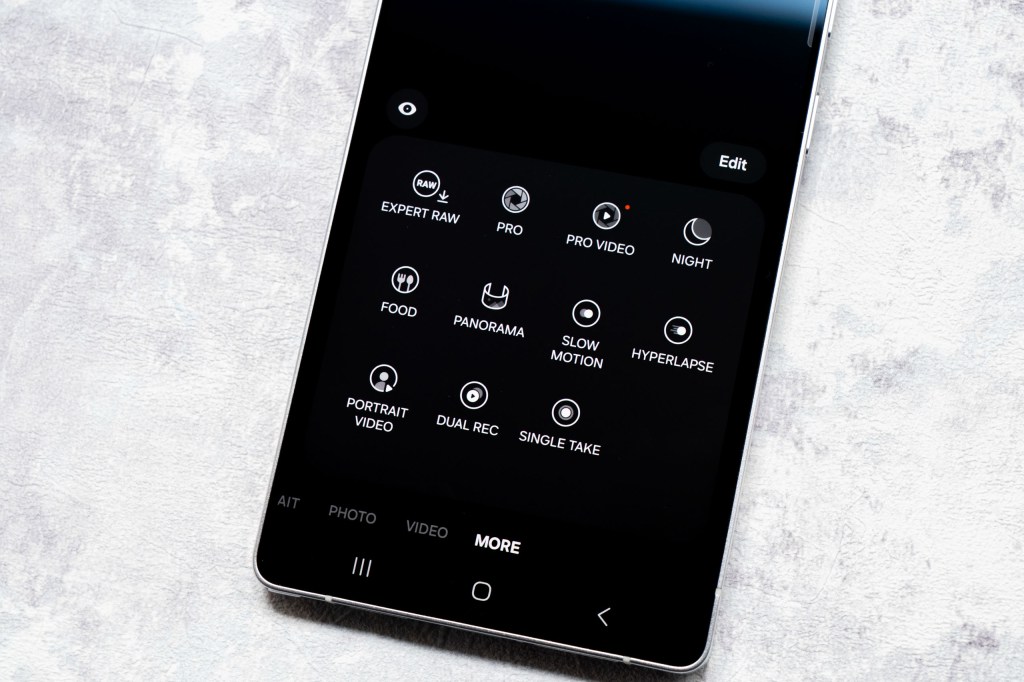
There are some extra camera features hidden away under a More tab. This is where you’ll find two different “pro” modes, called simply “Pro” and “Expert Raw”. The latter has the new “virtual aperture” mode. It’s in either of these modes that you can shoot in raw format, if you like. Other shooting modes here include Pro Video, Panorama, and Portrait Video.
For general video shooting, there’s a normal Video mode, where you can access all of the lenses, with the ability to shoot at up to 8K when working with the main sensor.
As with the S24 Ultra before it, the S25 Ultra has a wide variety of different AI editing which you can use after the fact to alter or improve your shots. You can move objects and people around a scene, remove “photobombers” and so on. Some of these work better than others – in my experience, the editor in the Google Pixel is better than in the Samsung, giving you a better set of more useful options to work with. That said, the results do seem to be better from the S25 Ultra when compared with the S24 Ultra – for example, doing better to remove additional shadows and so on. Either way, it’s certainly worth experimenting with what it can do.
Samsung Galaxy S25 Ultra: Image Quality and Performance
With very little in the way of improvements for the camera hardware, I wasn’t expecting a great leap in image quality for the S25 Ultra – and safe to say that’s exactly what I’ve got. Now, that’s not to say that it’s a bad thing – the S24 Ultra provided excellent images, and the S25 Ultra continues to do the same thing.
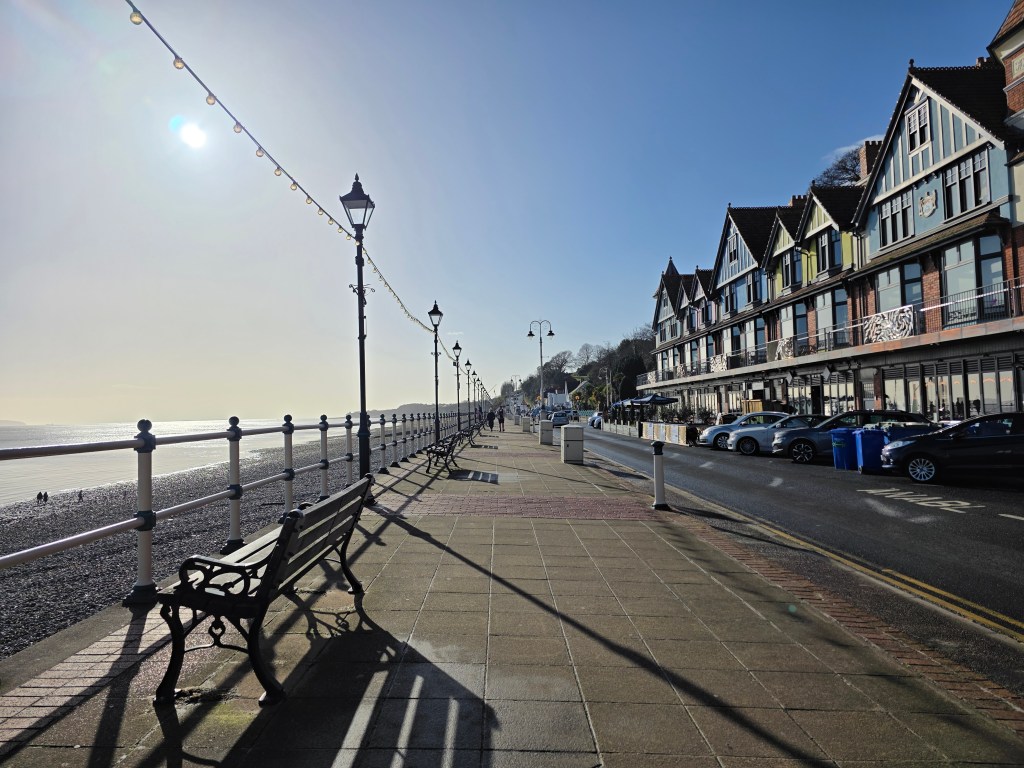
If you’ve already got an S24 Ultra, there’s not really anything to tempt you to upgrade here – but perhaps Samsung isn’t aiming the phone at you, it’s more likely to be aiming it at people who’ve got an Samsung S21 Ultra, Samsung S22 Ultra or perhaps an Samsung S23 Ultra. Or people who have different phones or brands altogether. And for anyone who doesn’t happen to already be using one of the best flagships of the moment, this is likely to be a significant step up in image quality.
As usual, the best results are found from the main 200MP sensor, but the others do a good job too. The 50MP ultrawide sensor is the only sensor which has seen a change in specs, and that does seem to contain a touch more detail than before – but it’s pretty hard to spot the differences in most day-to-day shooting scenarios.
The 3x lens is good for getting closer to the action, but it isn’t as good as the 1x lens. The 5x lens gets you closer still, and again puts in a decent enough performance. It’s this sensor that is also used for the 10x, 20x, 30x and even 100x options. 10x is fairly usable, especially in good light, but beyond that you’d probably need to be fairly desperate for a record shot to use it. 100x remains a marketing gimmick, leaving you with blurry and unusable images.
On a more positive note, colours are very good – Samsung seems to have toned down its overly garish shooting options for the last couple of models. It’s still a little more vibrant than real life, but perhaps that’s no bad thing. Even better is that colours are pretty well matched between the different lenses.
In low light, the S25 Ultra does a very good job – it’s about the same as the S24 Ultra. There’s a very slight improvement to be seen with the ultrawide lens, which now renders a little more detail in shadow areas compared with its predecessor. This is noticeable when looking at images shot by both side to side, but it’s unlikely that anybody who doesn’t have access to both models will be able to spot a huge difference.
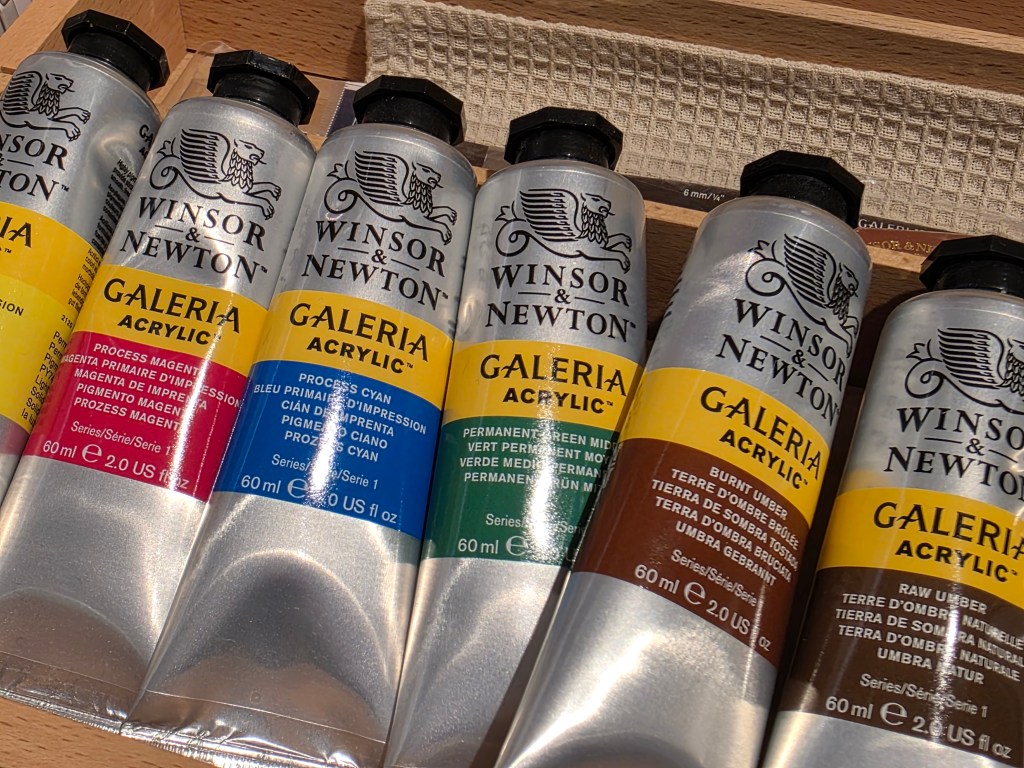
It remains disappointing that the bigger brands don’t adopt better macro shooting capability. Here with the S25 Ultra, the performance is reasonably good, but it’s not as good as seen elsewhere, particularly from devices such as the Xiaomi 14 Ultra and the Vivo X200 Pro.

The portrait effect remains pretty good – again, it’s about on par with the S24 Ultra. That means you get nicely detailed people shots with a nicely blurred background. Selfies are fairly good, but the 12MP front-facing camera is starting to look a bit old-hat now compared with some of the other – again mostly Chinese – devices on the market.
Video is very good. Although 8K is available, most will likely stick with 4K or Full HD. With either of these options you can switch between the various lens and digital zoom options. The results are fairly stable when shooting handheld and nicely coloured and detailed.
Samsung Galaxy S25 Ultra: Value for Money
The S25 Ultra is one of the most expensive smartphones you can currently buy, with a starting price of $1299/£1249 for the 256GB option. The price increases further if you want extra storage, being $1419/£1349 for 512GB or $1659/£1549 for 1TB.
That’s a huge amount to pay, but it doesn’t necessarily equate to bad value, if it’s the phone you want – and it does a lot for you. It also depends on what phone you currently have and whether it represents much of an upgrade.
As already mentioned, if you bought an S24 Ultra last year, this is barely any kind of upgrade at all. Put simply, I’d keep what you have and wait until at least next year before upgrading. Unless you really must have the latest device, it’s a great way to part you from your cash without getting much in return.
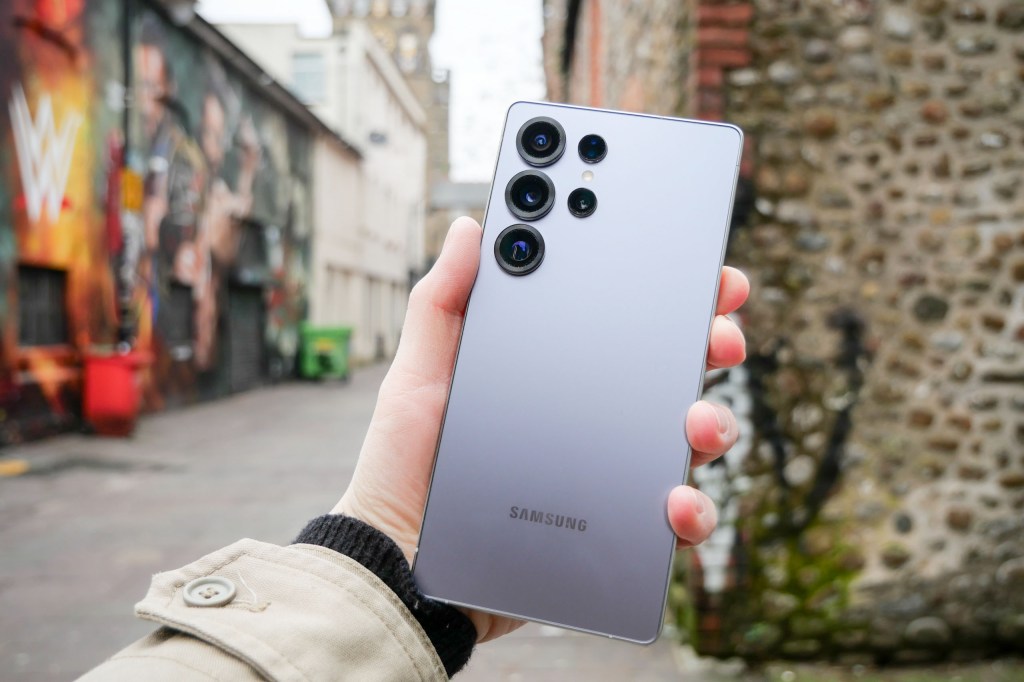
If, on the other hand, you’re coming up from an older Ultra model, then it’s likely much more worth doing. Even more so if you’re coming up from a non-Ultra model (or, shock horror, another brand altogether).
Compared with other flagships currently available, the S25 Ultra is a difficult price to bear, too.
Although if you’re a hardcore Android fan, the idea of an iOS device might be anathema, it’s interesting to compare the prices of the two – they’re the biggest selling brands after all. The iPhone 16 Pro Max starts at $1199/£1199, though the prices are more evenly matched for the 1TB version ($1599/£1599 for the iPhone). Remember, however, you will likely get more back for an iPhone when you come to sell it on in the future. Also remember that you can buy a smaller – and cheaper – iPhone 16 Pro and enjoy exactly the same camera system.

Looking outside the big two will get you some better bargains. The obvious Android contender is the Google Pixel 9 Pro XL, which has equivalent prices of $999/£999-$1349/£1349. Here though, it’ll be the Samsung which likely holds better value for re-sale purposes, so that’s always something to think about.
On the whole, the S25 Ultra is very expensive, but you do get a great performing phone for your money – it’s good value if you want it, but it won’t be for everybody.
Samsung Galaxy S25 Ultra: Verdict
Overall, the Samsung Galaxy S25 Ultra is a great performing device, and it produces excellent photos and videos.
It’s a big device, which will be to the tastes of some, but perhaps put off others – I’d love Samsung to introduce a smaller Ultra variety, but perhaps it believes the market isn’t there.
The native camera app has a lot going for it, including the AI editing suite which can really help to improve your photographs.
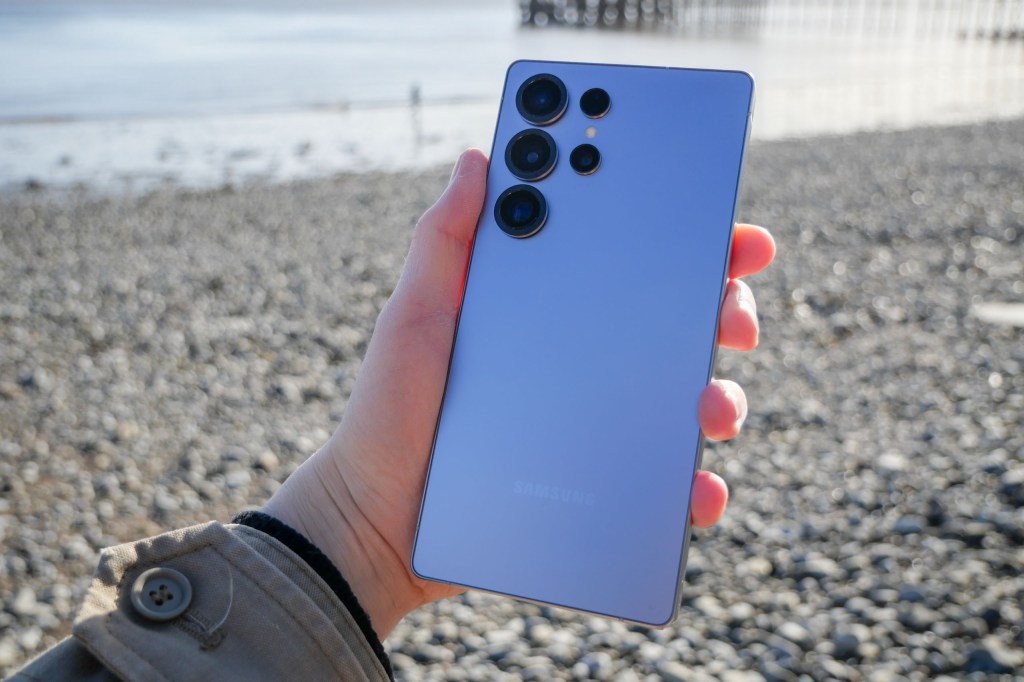
So, what are the drawbacks then? Well, the biggest one is simply that it’s not much of an upgrade compared to the last model. There’s a minor improvement to the camera setup, while the aesthetics of the device have been changed a little.
It’s not really enough to tempt existing S24 Ultra owners – aside from those who are super fans of the brand and probably pre-ordered it from the moment it was announced.
But is that a bad thing? I say no it’s not – we shouldn’t feel obliged to upgrade our perfectly good phones every year, it’s bad for your wallet, and terrible for the environment too. Better to wait at least 2-3 years between upgrade cycles and remain content with what you have.
If you’re upgrading for the first time in a while, the S25 Ultra is a fantastic option. It’s probably not the best smartphone for photographers on the market just now, I’d still give that to the Xiaomi 15 Ultra, but for those who’d prefer to stay with mainstream brands it’s certainly the Android to beat.

Related reading:
- Samsung Galaxy S24 Review – the best small flagship smartphone?
- iPhone 17 review: is this the iPhone you should buy?
- iPhone 17 Pro review: Apple’s best camera, but is it worth upgrading?
- Best used smartphones to buy right now
Full Specifications
| Main, wide-angle camera | 200MP wide camera, 24mm, f/1.7, 1/1.3” sensor, PDAF, OIS |
| Telephoto camera 1 | 10MP telephoto camera, 67mm, f/2.4, 1/3.52” sensor, PDAF, OIS, 3x optical zoom |
| Telephoto camera 2 | 50MP periscope telephoto camera, 111mm, f/3.4, 1/2.52” sensor, PDAF, OIS, 5x optical zoom |
| Ultra-wide camera | 50MP ultrawide camera, 13mm, f/1.9, PDAF |
| Selfie camera | 12MP f/2.2, 26mm selfie camera with AF |
| Video | 8K 24/30fps, 4K 30/60/120fps |
| Battery | 5000mAh, 45W wired, 15W wireless charging |
| Screen | 6.9-inch 3120×1440 pixel AMOLED, 2600 nits peak brightness, Corning Gorilla Armor 2 |
| Processor | Qualcomm Snapdragon 8 Elite |
| Storage | 256GB, 512GB, 1TB |
| Operating System | Android 16 |
| Dimensions | 162.8 x 77.6 x 8.2mm |
| Weight | 218g |
| Dust and water resistance | IP68 |


